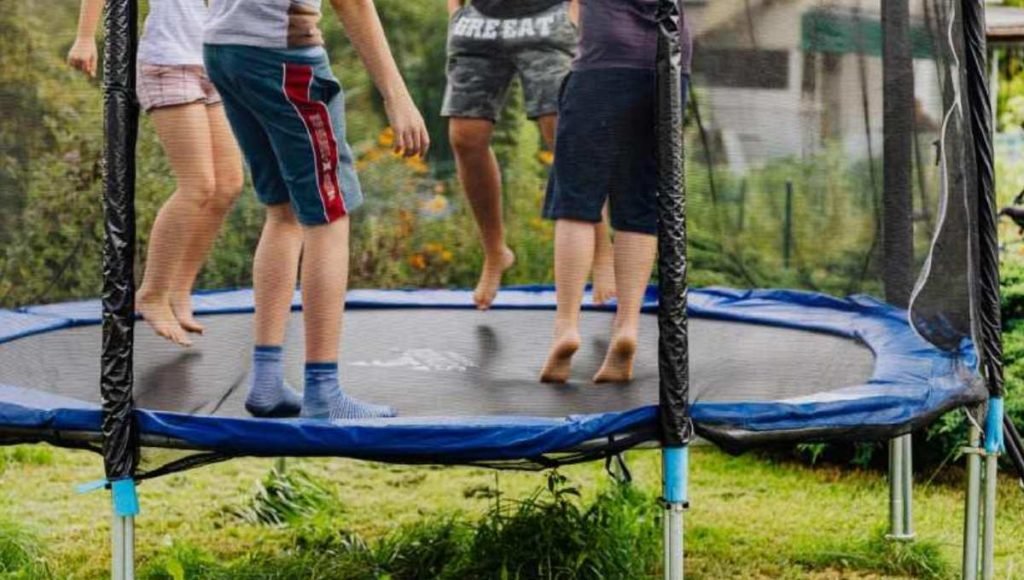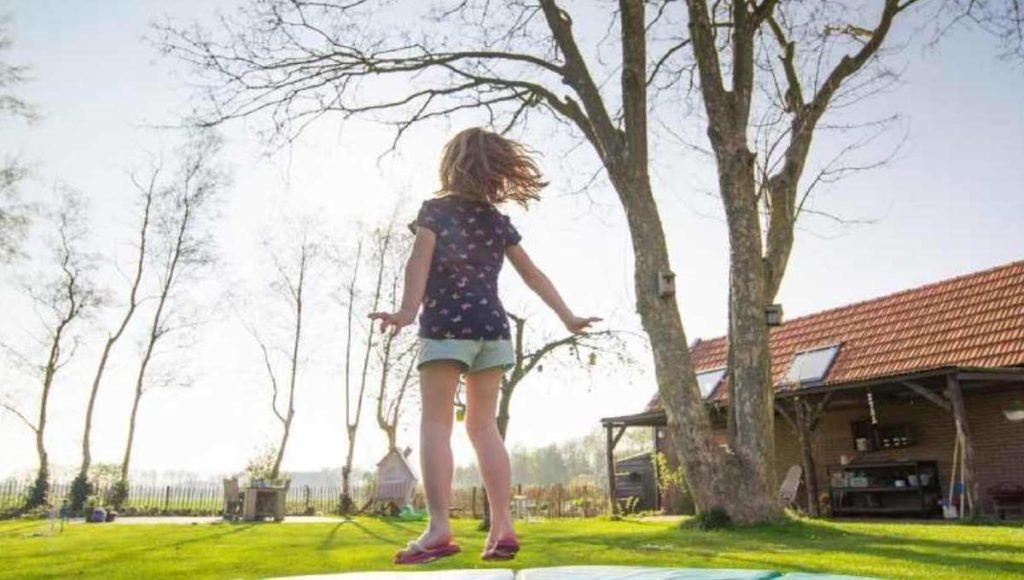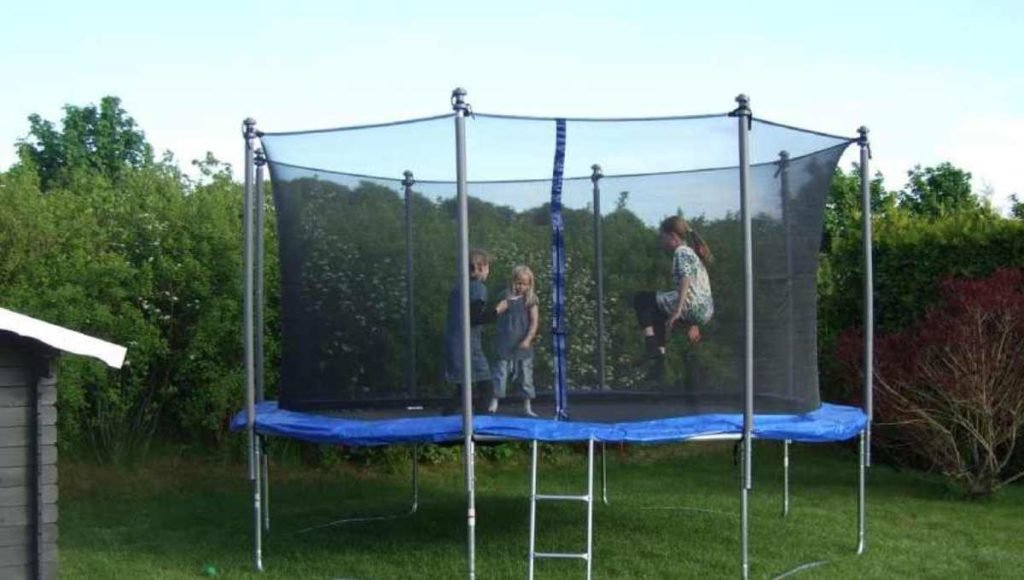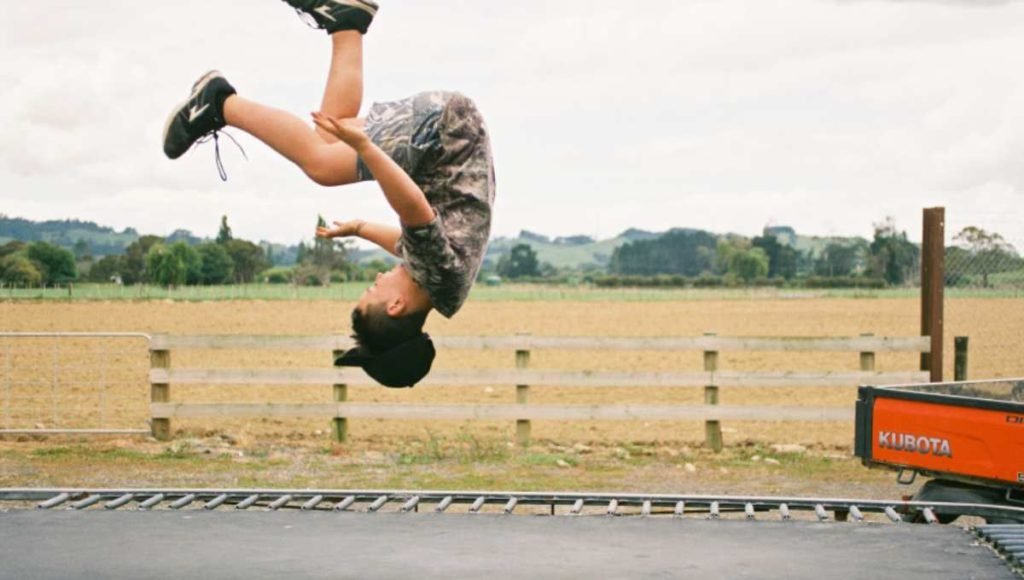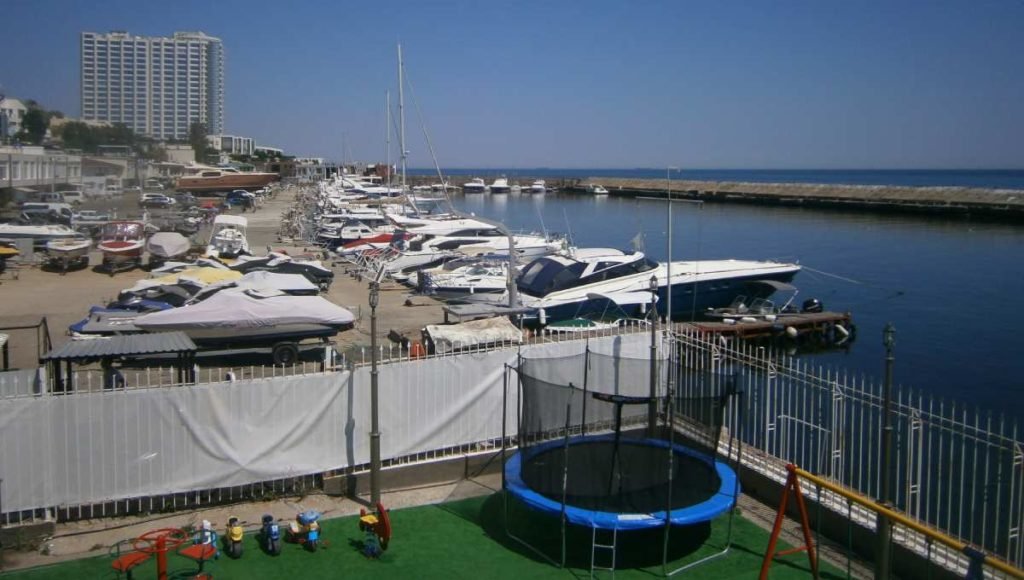Rebounding on a trampoline is a fun and beneficial activity for adults and young people. It’s a low-impact workout for our body to reap the health benefits from the comfort of our home. But if you’re wondering, is trampoline bad for toddlers?
Then I got a few facts and evidence to answer it. So let’s dive into the facts.
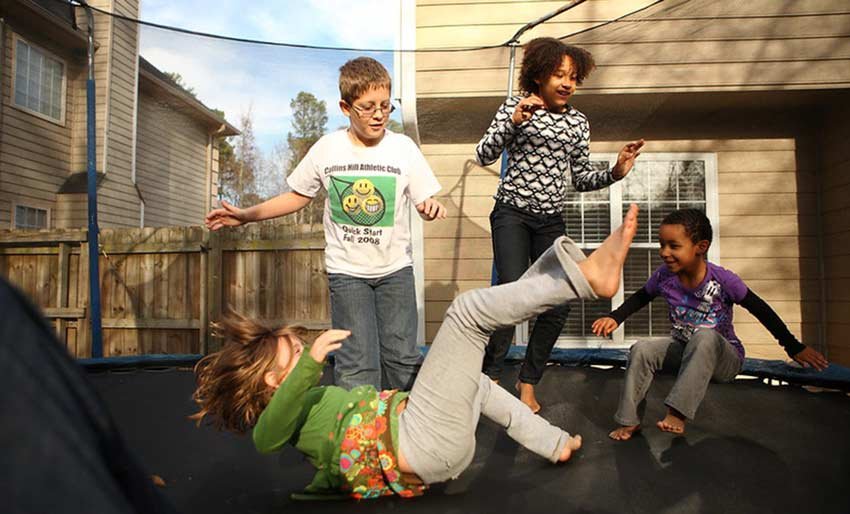
In 2014, according to the American Academy of Pediatrics and Consumer Product Safety Commission, approximately 104,691 injured individuals visited the ER due to trampoline accidents. And among them, the majority are children and teenagers.
So the official verdict is, the trampoline isn’t safe for toddlers. That’s why the American Academy of Pediatrics and the American College of Orthopaedic Surgeon recommends children under six years old shouldn’t use a trampoline.
Since toddler means your kid is somewhere between 12-36 months old, you’d let them on a trampoline.
Before you can find a way to make your toddler happy and safe on a trampoline, just take some necessary safety measures, and you should be fine. We’ve discussed essential steps to make trampoline safe for kids at the end of our article. Scroll down to take a look.
Is trampoline safe for toddlers?

Of course, it is safe as long as you supervise your child. I hope you know at what age we call our children toddlers. No? A child aged between 12 to 36 months is considered a toddler.
I don’t know how old your kid is, but when it comes to trampolines, you shouldn’t leave them alone. Not until they reach their teenage years. Even then, some form of safety measures needs to be taken to avoid minor to life-threatening injuries.
The Cleveland Clinic forbids to leave your young ones unsupervised on a trampoline. They straight up recommended not to use the trampoline for kids and toddlers.
A well-known pediatric orthopedic named Ryan Godwin, MD, said, “We expect to see trampoline and bicycle fracture rates rise” He also said that “Kids have been cooped up all winter long”.
He’s concern raises after the winter as several kids and teenagers are rushed to the clinic with fractured and broken bones. Along with bone injuries, internal injuries like concussions, neck and spine injuries are also common. And they are more complex and challenging injuries to recover from fully.
Should I buy a trampoline for my kids?

Of course, you can. But first, you need to understand the potential risks involved before letting your kid on a trampoline. I’m not saying your kids will get injured for sure. But there’s a strong possibility.
A survey carried out between the year 2002-2011 showed concerning numbers of injuries related to the trampoline. Throughout this ten-year tenure, almost 100,000 cases related to trampoline accidents have been reported.
Within those ten years, almost one million individuals visited the emergency room due to trampoline-related injuries. Among those one million cases, more than 300,000 people came with fractured and broken bones.
“This is not a toy. It’s a piece of equipment.” A statement made by Dr Michele LaBotz. In an interview with NBC News, the talented Pediatrics, sports medicine, and the lead author of the AAP statement said, “We recommend that you not provide it for your family or your neighbors to use. But if you do use one, you need to be aware of the risks.”
In 2012, the American of Pediatrics warned parents not to allow their kids on the trampoline for recreational purposes because 95.1 percent of the total number of fractures occur at home.
And these injuries cost a lot of money. According to the HuffPost, a study conducted by the Journal of Pediatric Orthopaedic, every year, nearly one $1 billion expense were made to the emergency department.
They also indicated that 92.7 percent of the total trampoline-related injuries occur in children aged 16 or under. Not great statistics for you to spend hundreds of dollars on a trampoline knowing that I could cost you thousands of dollars later on. And the most important of all, the potential health damages to your child.
How do most of the trampoline injuries occur?
Two out of three trampoline-related injuries occur in children when they are jumping together. The leading causes are collision, rebounding close to each other, pushing each other away, competing for highest jumps and other unusual stuff kids are known for.
Toddler’s trampoline injuries occur mostly by falling off the trampoline, losing balance and landing on the trampoline mat awkwardly, unknowingly jumping too close to the trampoline bed where metal springs and holding screws are, etc.
Which body parts are likely to get injured from trampoline accidents?
Most of the injuries, including broken bones and fractures, occur on the upper portion of the body. To be more precise, almost 59.9 percent of affected areas are upper extremities and 35.7 percent in the lower extremities.
Around 37 percent of the upper injuries are broken forearms, and 17 percent include broken elbows. At the same time, the legs get the most sporadic cases in the lower portion—about 39.5 percent broken bones at the lower leg and 31.5 percent of ankle injuries.
Luckily, toddlers are less likely to injure their spine, face or head. And we should keep our toddlers away from any head traumas as much as we can.
Because a toddler’s neck muscle isn’t strong enough to fully support and control their head, and the skull itself isn’t strong enough to endure damages.
Forget about the trampoline; if you even shake or jerk your toddler, the force is strong enough to cause damage to the head. And toddler’s head injuries can easily cause permanent brain damage, vision impairment, and autism.
The Chair of the IU School of Medicine Department of Orthopaedic Surgery Dr Randall. T. Loder M.D. said that “They are probably jumping higher, with more force.” He also added, “And believe me; teenagers are risk-takers. Younger kids may not understand the potential outcome of their actions, but they’re not so much risk-takers. Teenagers, they’ll push the limit.”
Tips to make trampoline safe for your toddler

Everything in life has danger embedded within it. But that doesn’t mean we should stop living. The trampoline may have some potential risks, but if you can work around it, it could be the best thing that happened to your toddler.
Let’s take some safety measures and caution and make a safe indoor or backyard rebound activity.
Do you know that rebounding on a trampoline reduces the stereotypical behaviours in autistic kids and helps them increase focus on specific tasks?
There are mental and physical benefits involved in rebounding, but that’s a topic for another article. For now, these following safety measures should be enough to allow your toddler on a trampoline.
- Do not set up the trampoline near any hard objects in your backyard. Install the trampoline and make sure it has at least 2-meter space at every side.
- Inspect your trampoline condition in every 15 days. Check the metal screws, spring, look out for any tearing or lose parts. Replace any corroded metal parts to ensure safety.
- Installing safety pads around the trampoline edges to cover the metal parts is a smart investment. Even if your toddler ends up bouncing near the border, he or she won’t come in contact with those metal springs and screws.
- Never shy away from investing in a quality safety net enclosure for your trampoline. Trust me; it’s a hundred times cheaper than what you might have to pay as a hospital bill.
- Keep your toddler supervised when you let him or her on the trampoline. Don’t let two or more kids on a trampoline at once. And restrain your kid from trying to jump higher. And don’t forget to take off any hard objects like ornaments, coins, watches, glasses, etc. from your kid. Just tell them to take it easy if they don’t want to be kicked out of the trampoline. A little discipline in their toddler years will go a long way. Trust me.
Take away
Trampolining is a fun way to stay healthy. Every adult should at least rebound on a mini trampoline for health benefits and mental recreation. But when it comes to your toddler, it turns into a different ball game.
My verdict on today’s topic, is trampoline bad for toddlers- or not is simple, don’t buy a trampoline specifically for your toddler. But If you do already have one, then take 100% safety measures before it’s too late because your toddler will want to rebound anyway. It’s just a matter of time.
